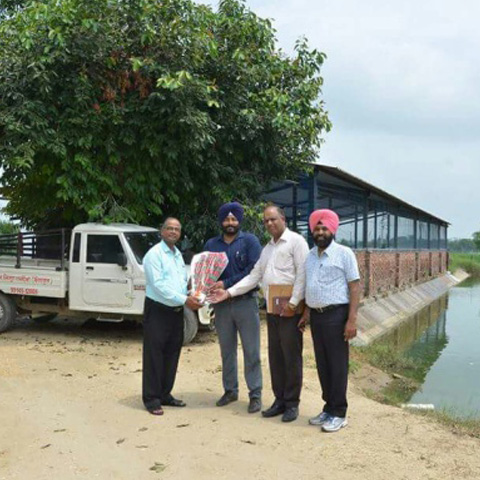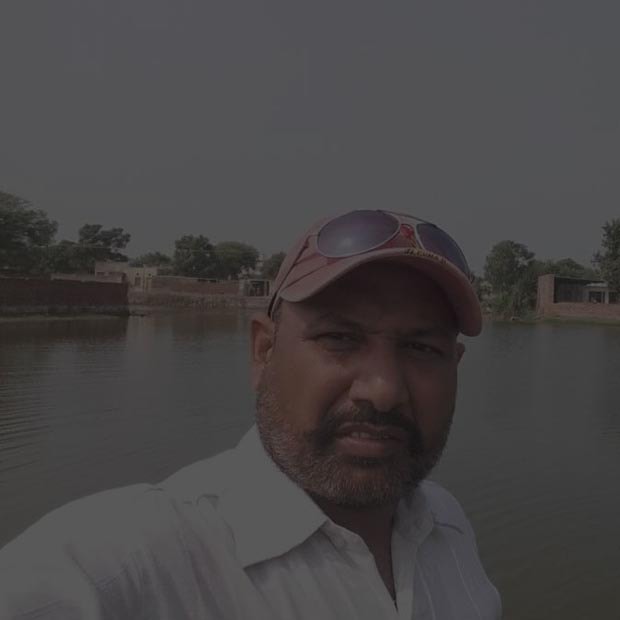Sapinder Singh Taking Allied Agricultural Activities to the Next Level in Punjab by Integrating Fishery with Piggery
In most part of India, farmers are adopting integrated agricultural allied activities to support their domestic economy. And why not they would be doing that, Integrated Farming System not only provides reasonable livelihood to the rural community but also provides a backup support in case if one of the business faces loss due to any reason. Following the same example, progressive farmer Sapinder Singh from Sangrur adopted fisheries along with pig farming and is setting an impressive example for the other farmers in Punjab.
This is the story of a retired personnel – Sapinder Singh, who after dedicating 18 years of his life to the Military Engineering Service decided to come back to its roots in Punjab and devote the rest of his life to farming. Coming from an agriculture background, it was not difficult for Sapinder Singh to continue farming again. But the major crops, Wheat, and Paddy was not a profitable venture from him, which was one of the reasons he was influenced towards allied agriculture activities.
In-between this period, once Sapinder Singh visited Sangrur city for some personal affair and there he came to know about the process of fish seed production at a Fish Seed Farm. After approaching the workers at the fish farm he came to know that 5-days-training-program is organized once in a month to train the ambitious farmers who want to adopt fish farming as their career for life.
“And this was when I decided to follow fish farming. My mother and I took five days training program in October 2013. From there I came to know that fish seed is supplied only from March to August.”
Not missing even a single moment after the training, Sapinder Singh decided to prepare his own pre-culture tank (nursery tank) and stock it with fish seeds. For the tank preparation, he dug a pond on his land after getting his land checked under soil and water testing. Fishery department also helped him in loan application and loan instalment process was also very smooth for Sapinder Singh.
“For fish farming, I applied for a loan of Rs. 4.50 lakhs and after sometime Rs 1.50 Lakh was the first loan instalment that I received. The remaining loan payment was also on time, due to which I never faced any type of financial problem during the establishment of my fish farm. ”
Fishery officers played the important role in enlightening Sapinder Singh with the information at the right time. They suggested Mr. Singh about integrated farming and then he decided to start pig farming as well. After undergoing the training process, Sapinder Singh applied for the loan of Rs 4.90 lakh to establish the piggery shed.
Currently, Sapinder Singh is following fish farming in 3.25 acres with 200 piglets. There was a profit of net worth Rs. 8 Lakh from the integrated farming system of fish with pig farming. Fishery and Animal husbandry, both the departments disbursed Sapinder Singh subsidy of Rs. 1.95 Lakh and Rs. 1.50 Lakh. Both Departments and District Administration fully co-operated and provided him full opportunity to flourish his business.
Currently, Sapinder Singh is running his farm successfully and whenever he gets the chance he tries to motivate the farmer to join KVK training camps, District Training Programmes by GADVASU for proper farming knowledge.
With his accelerating curiosity, he wants to stay one step ahead always. Sapinder Singh also knows what should be his next step to progress, and that is why he is planning to invest in processing plant of pig-fish unit.
Sapinder Singh is a modern progressive farmer who changed his farming method according to the latest trends and took advantage of every opportunity. Other farmers also have to understand Sapinder Singh’s approach if they want to progress in the agriculture field.
Message
If farmers want to earn well and improve their domestic status economically then they have to adopt Agri-allied professions along with crop cultivation.









